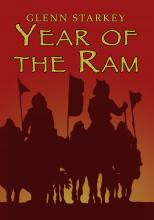Ghosts Dancing
Submitted by Jim Greenwald on February 4, 2012 - 06:09Title: Ghosts Dancing
Author: Steven Fortney
Genre: Historical Fiction
Reviewer: jim greenwald
ISBN (links go to the MWSA Amazon store): B0068UB4O2
Most Americans don’t know who Louis Riel is, nor who that remarkable people the Métis were; nor do they know that there were many important Americans influenced by the Empire-driven ideas of Manifest Destiny who had serious designs on acquiring for the United States all of what is now Canada west of Ontario from the 90th meridian to the North Pole and to the Pacific. These included US senators (Ignatius Donnelly of Minnesota), Cabinet members (William Seward of Seward’s folly) and American Presidents (US Grant, for one, briefly).
Nor are we aware that our Plains Indian Wars of the 1840-1890s were a
mirror of the Métis-First Citizen wars of the Northwest Territories of
Canada. Louie Riel, Gabriel Dumont, the Prophet Wovoka and Sitting Bull had parallel careers. Little Big Horn and Duck Lake and Tourond’s Coulee are
shadows of each other as are Wounded Knee and the disaster of the battle of
Batoche in Saskatchewan. The Battle of the Little Big Horn, the assassination
of Sitting Bull, the Ghost Dance Religion, the religious agony and execution
of Louis Riel for treason against the Queen sadly mirror each other.
These events, dramatized in Ghosts Dancing, are all recounted as David St.
Clair and his Métis friend Pilgrim journey through the Western Frontier.
Overhead, the northern lights, the Dancing Ghosts, the Wawatay—which the
Ojibwe believe to be their ancestors’ spirits—swirl, warning of impending
peril.
With each on his own quest, David St. Clair and Pilgrim wander through the
recently surrendered lands of the Native Americans. Portrayed here is the
nightmare vision Riel’s execution and of the Wounded Knee Massacre. We see it clearly, as we have seen so much of the narrative, through St. Clair’s
eyes; but nothing could have prepared him for that bitter day of December 29, 1890. Sickened by what he witnesses, and powerless to do anything about it, his breaking point comes when he sees a fleeing Sioux mother pitilessly cut down from behind by a soldier’s rifle shot. St. Clair’s universe implodes in an instant and he sees, in his mind’s and heart’s eye, his childhood home and his father’s and mother’s lives being destroyed as the Sioux innocents’ lives are being destroyed in front of him.




